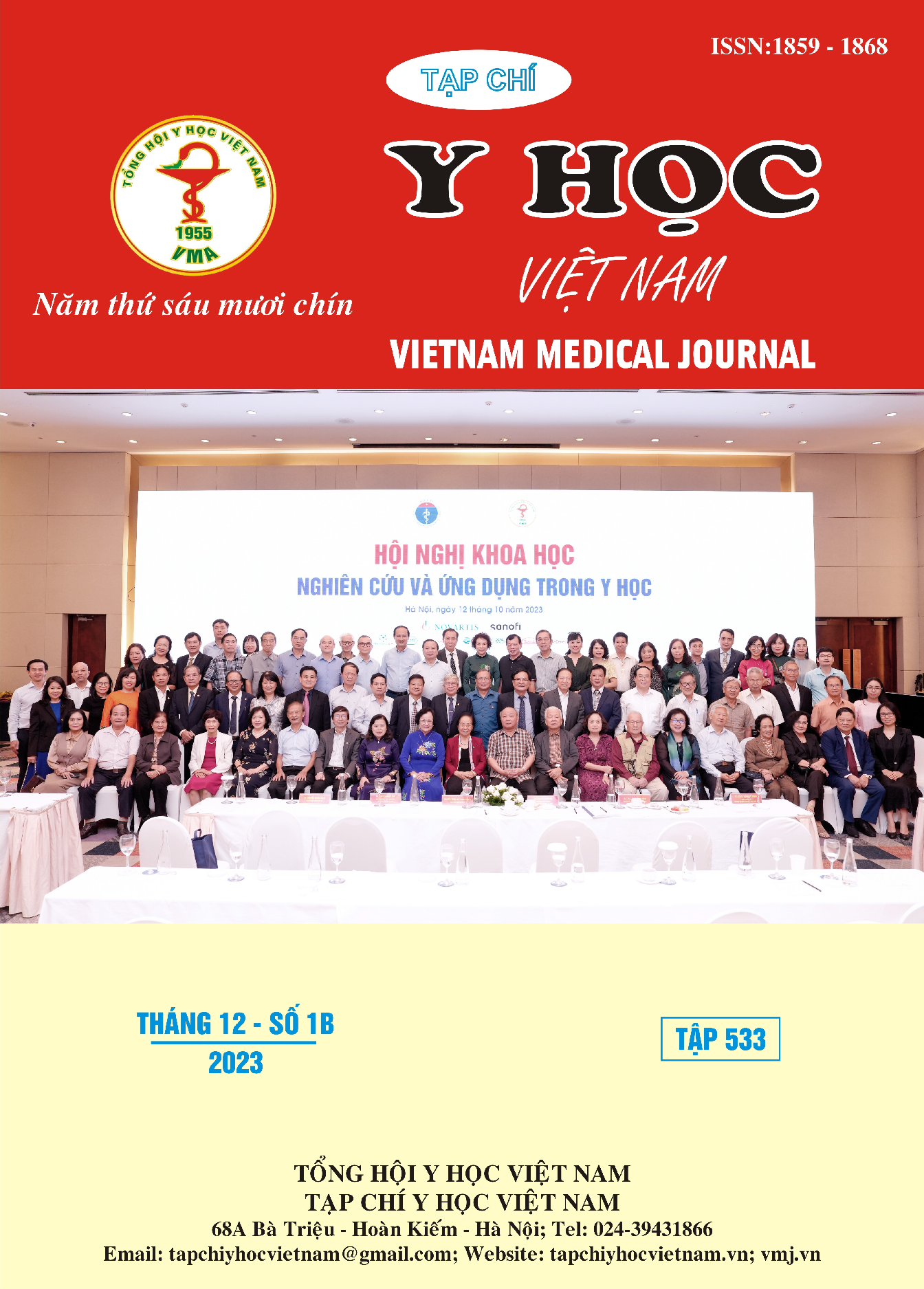DISADVANTAGES AND FACTORS RELATED TO OUTCOME IN THE TREATMENT OF IDIOPATHIC SCOLIOSIS WITH A BOSTON-CHÊNEAU BRACE
Main Article Content
Abstract
Objectives: Identify the disadvantages and evaluate factors related to treatment outcomes in patients with idiopathic scoliosis at the Ho Chi Minh City Hospital for Rehabilitation – Professional Diseases. Patients and methods: A retrospective study of idiopathic scoliosis patients treated conservatively with Boston-Chêneau orthopedic braces at the Occupational Disease Rehabilitation and Treatment Hospital from June 2022 to June 2023. Results: The study enrolled 132 patients, girls accounting for the majority (90.9%). The median age was 12.5 ± 2.4 years. Children's use of braces was close to compliance, with a 79.5% rate of > 20 hours per day. The rate of "success" treatment was 78.1%, and shortness of breath and pain were common symptoms in women with rates of 84.2% and 95.0%, respectively. There were non-statistically significant differences in what problems arose between boys and girls. The study has not found an association between treatment outcomes and associated factors. Conclusion: Idiopathic scoliosis is more common in girls than boys. Children adhere to the time of use of the brace shirt resulting in a shorter adaptation time. As a result, the child has a fairly high result of "success" treatment, and the duration of treatment is significantly reduced. However, the difficulty of long-term treatment of the splint is that it causes unpleasant symptoms in the child, pain and breathless are the most common.
Article Details
References
2. Trịnh Quang Dũng (2021). Nghiên cứu hiệu quả can thiệp cho trẻ vẹo cột sống không rõ nguyên nhân bằng áo nẹp chỉnh hình TLSO, Luận văn Tiến sĩ Y học, Đại học Y Hà Nội,
3. Jayant Joshi (1999). Essentials of orthopaedics & applied physiotherapy, Elsevier India,
4. Clayton J Adam, Geoffrey N Askin (2006). "Automatic measurement of vertebral rotation in idiopathic scoliosis". Spine, 31 (3), E80-E83.
5. Randall L Braddom (2010). Physical medicine and rehabilitation e-book, Elsevier Health Sciences,
6. Angelo G Aulisa, Marco Giordano, Francesco Falciglia, Emanuele Marzetti, Andrea Poscia, Vincenzo Guzzanti (2014). "Correlation between compliance and brace treatment in juvenile and adolescent idiopathic scoliosis: SOSORT 2014 award winner". scoliosis, 9 (1), 1-9.
7. Rui Zheng, Doug Hill, Douglas Hedden, James Mahood, Marc Moreau, Sarah Southon, et al. (2018). "Factors influencing spinal curvature measurements on ultrasound images for children with adolescent idiopathic scoliosis (AIS)". PLoS One, 13 (6), e0198792.
8. Kevin C Chui, Milagros Jorge, Sheng-Che Yen, Michelle M Lusardi (2019) Orthotics and Prosthetics in Rehabilitation E-Book, Elsevier Health Sciences,


